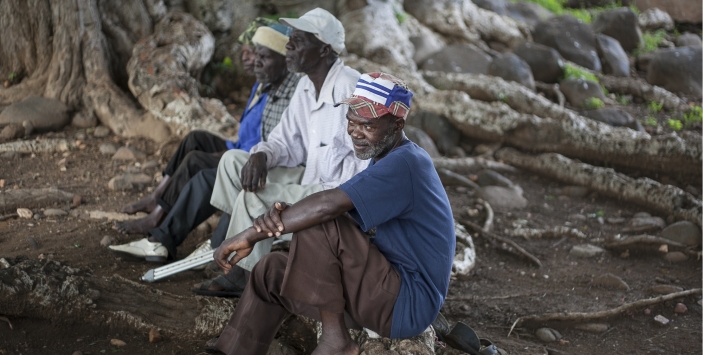
Since 2013, HelpAge International has been involved in the development of age networks in Lesotho, Malawi, Mozambique, South Africa, Zambia and Zimbabwe. Together, they are part of the Southern Africa Regional Age Network. Along the way, many lessons have been learned.
The establishment of an age network is not a goal in itself. A network can have an excellent structure, yet fail to improve the wellbeing of the older men and women it was set up to help.
To succeed, an age network must be well-managed and bring like-minded organisations together to achieve success. It must have a clear purpose and all members need to have a shared understanding of what they want to achieve and how they will do it.
There must be clarity on the criteria for membership, on logistical issues, such as where meetings will take place and how frequently, and on what resources the network will require.
One or more individuals need to take the responsibility for coordinating the network. Ideally this person should come from one of the stronger member organisations that has the capacity to take on the role of secretariat, allocate staff, and provide other support and resources.
A good way to start is by developing a terms of reference describing the network’s purpose and structure, as well as establishing the key values and ways of working in an operational framework.
Making an age network effective
Once the foundations of an age network are in place, you need to put the time, effort and commitment into making it effective. Each network is different and there’s no silver bullet for success, but here are 10 important elements to consider:
1. Diverse members and strategic partners make for a stronger age network
Look beyond organisations that just focus on older men and women when seeking members and developing strategic partnerships. The National Age Network of Zimbabwe, for example, has had success raising awareness of ageing among younger people by having Chiedza Child Care Centre as a member.
2. Build trust between member organisations
It is important for members to trust and respect each other to ensure a secure and cohesive network. Regular communication through in-person meetings, as well as remotely via email, Skype, text or phone, and the development of shared values that set challenging but achievable goals can support these relationships. Don’t forget to celebrate the successes too!
3. Encourage active participation of members
The success of the age network depends on the active participation and commitment of all member organisations. Assign responsibilities and involve everyone to make this happen.
4. Plan concrete activities that are interesting to member organisations
You do not want to make network membership a burden to the organisations involved, and that is why it is crucial to put time and effort pulling together activities that engaging and relevant. For example, in Zambia the network focused on influencing national laws and policies on older people. This led to a tangible and significant achievement with the development of the National Ageing Policy in 2016.
5. Set up good governance and management systems
A successful network needs clear guiding principles and agreed governance systems that cover the purpose of the network, the roles and responsibilities of the board, membership criteria, grievance mechanisms, and operational procedures and policies.
6. Ensure strong communication and decision-making processes
Excellent communication structures should be in place to allow information to flow freely between members and enable everyone to get involved in decision-making and take on new initiatives. Where there is expertise in a particular area, it would be good to form clusters or forums within the network.
7. Develop sufficient resources and strong financial systems
Age networks require resources to function. It is important to develop a resource mobilisation strategy that is linked to the network’s long-term strategy. If possible, all member organisations should contribute resources, whether financial or time. Being able to track funding and returns is also key to improving value for money.
8. Ensure regular monitoring and evaluation
The age network’s secretariat, or another specified member, should take responsibility for monitoring and evaluating activities.
9. Put the emphasis on learning and knowledge sharing
There is a huge amount of knowledge and expertise within any given age network, and it is crucial that each member can learn from the others. A knowledge hub is one way this can be done, such as AgeAfrica.net developed by the Southern African Regional Age Network, which hosts publications and other resources on ageing issues.
10. Be flexible and respond to changing needs
Age networks must be dynamic. They need to adapt to changing socioeconomic and political contexts, as well as sudden onset urgent needs, such as those in the wake of a natural disaster.
Please add your own tips about how best to set up and run a successful age network in the comments.
To find out more about age networks, download the latest edition of Ageways (PDF – 1.3mb).
